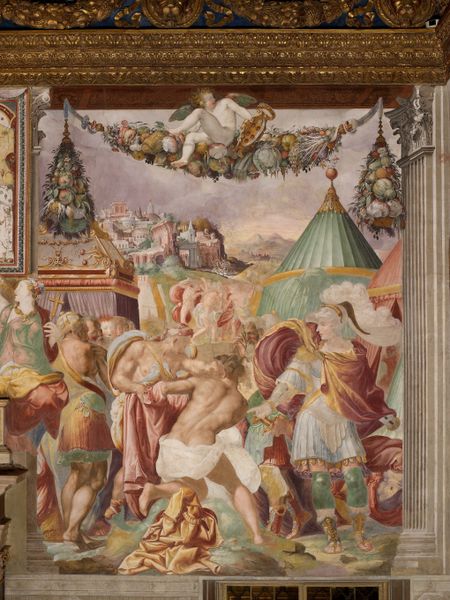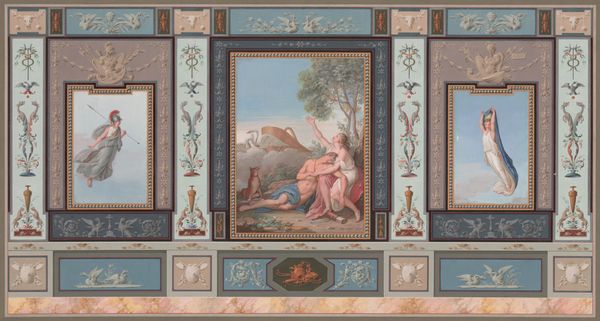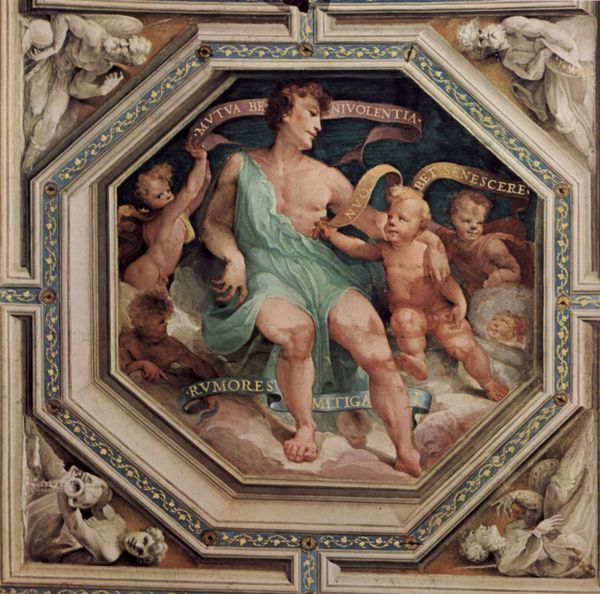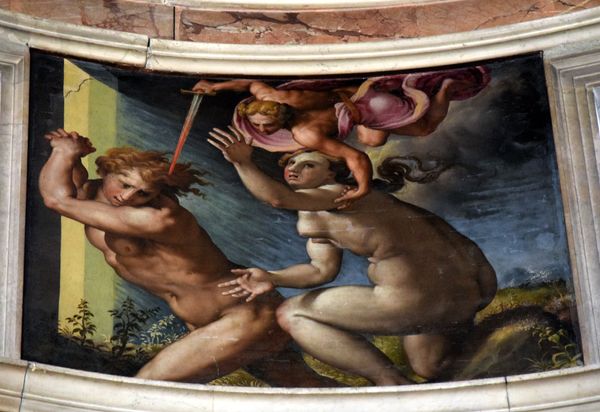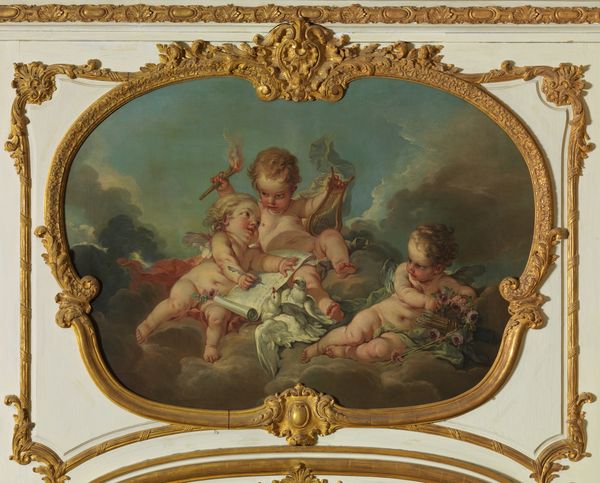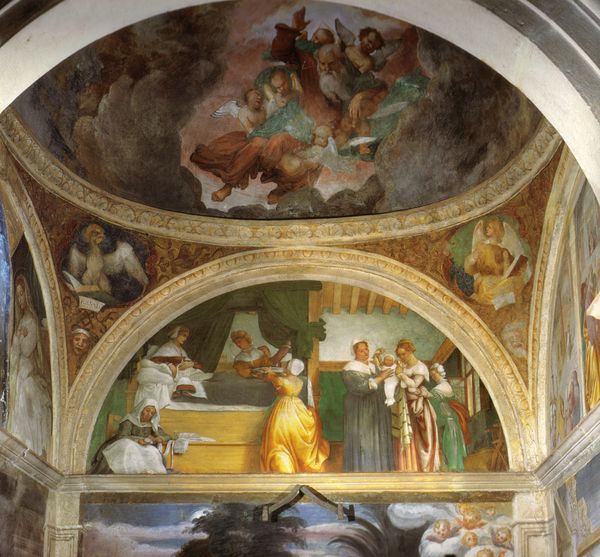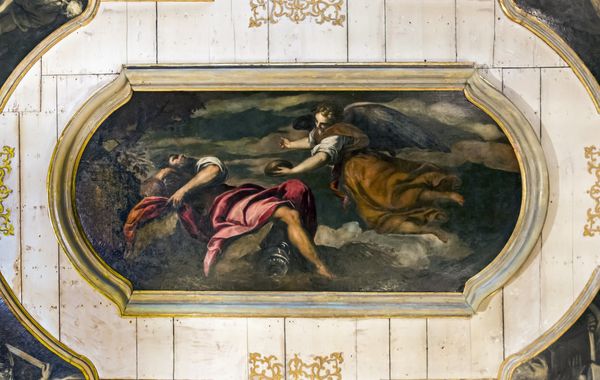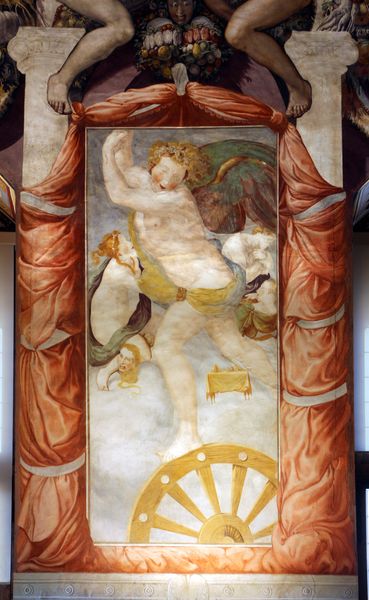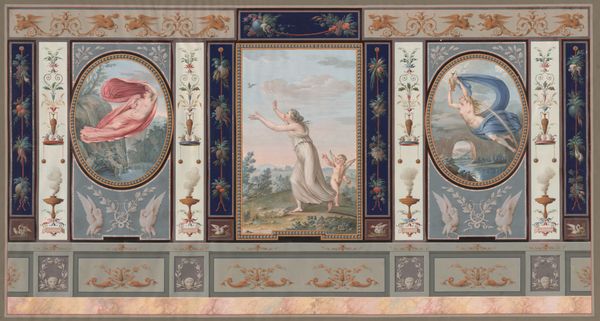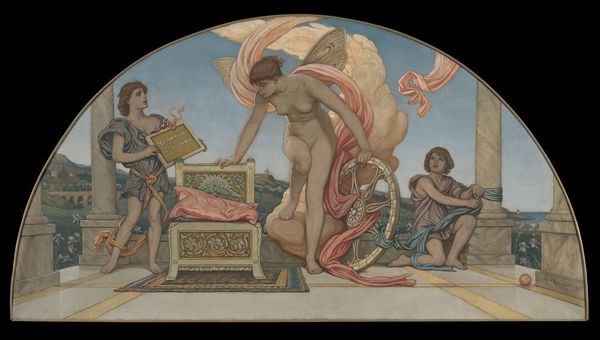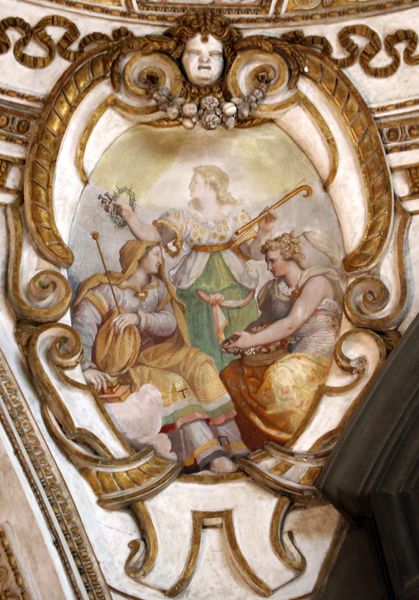
oil-paint, fresco
#
allegory
#
oil-paint
#
mannerism
#
figuration
#
fresco
#
oil painting
#
mythology
#
history-painting
#
italian-renaissance
#
nude
Copyright: Public domain
Curator: What strikes me most immediately is the subject’s palpable sense of precariousness, suspended there between action and reflection. Editor: Yes, that winged figure perched on a cloud feels distinctly imbalanced. We are viewing "Time as Occasion (Kairos)," painted around 1545 by Francesco Salviati, also known as Cecchino. It's an oil on, I believe, a fresco base. The muted palette gives it such a striking presence. Curator: Precisely. The balance isn’t merely physical, it is conceptual. The composition guides the eye along the dynamic tension. Notice the line extending from the razor held above his head, bisecting his flowing locks—symbolizing the fleeting nature of opportunity grasped, contrasted against the grounded, earthly landscape below. Editor: That is fascinating. It seems though Salviati is concerned less with precise historical or mythological rendering and more with the actual application and texture of the pigments. The modeling of the muscles, while technically proficient, is somewhat overshadowed by a looser, more expressive approach to light and shadow across the figure's torso. What were the socio-economic conditions around art making that enabled this type of freedom, a kind of almost sensual relationship with his materials? Curator: It is, certainly, within the Mannerist idiom, an exaggeration of form—the contrapposto pose, that affected nonchalance in his gaze. It’s about refining visual codes, complicating classical ideals through intentional distortions. Look how his wings mimic vegetal forms of early renaissance masters. There is a deliberate conversation with past aesthetic standards. Editor: Agreed, and I am intrigued by the relationship between high art and craft at the time this was created. Salviati had access to the best materials and techniques to convey the idea of temporality but this rendering exists on the foundation of very physical practices, all under specific temporal and economic conditions, and as viewers we become, essentially, the temporal and social successors of its creation. Curator: That intersubjectivity enriches how we understand this painting today. Time is a common denominator in making and viewing art across all social categories. Editor: Absolutely. Each detail in both the figure and in our engagement with its context becomes significant in the process.
Comments
No comments
Be the first to comment and join the conversation on the ultimate creative platform.
